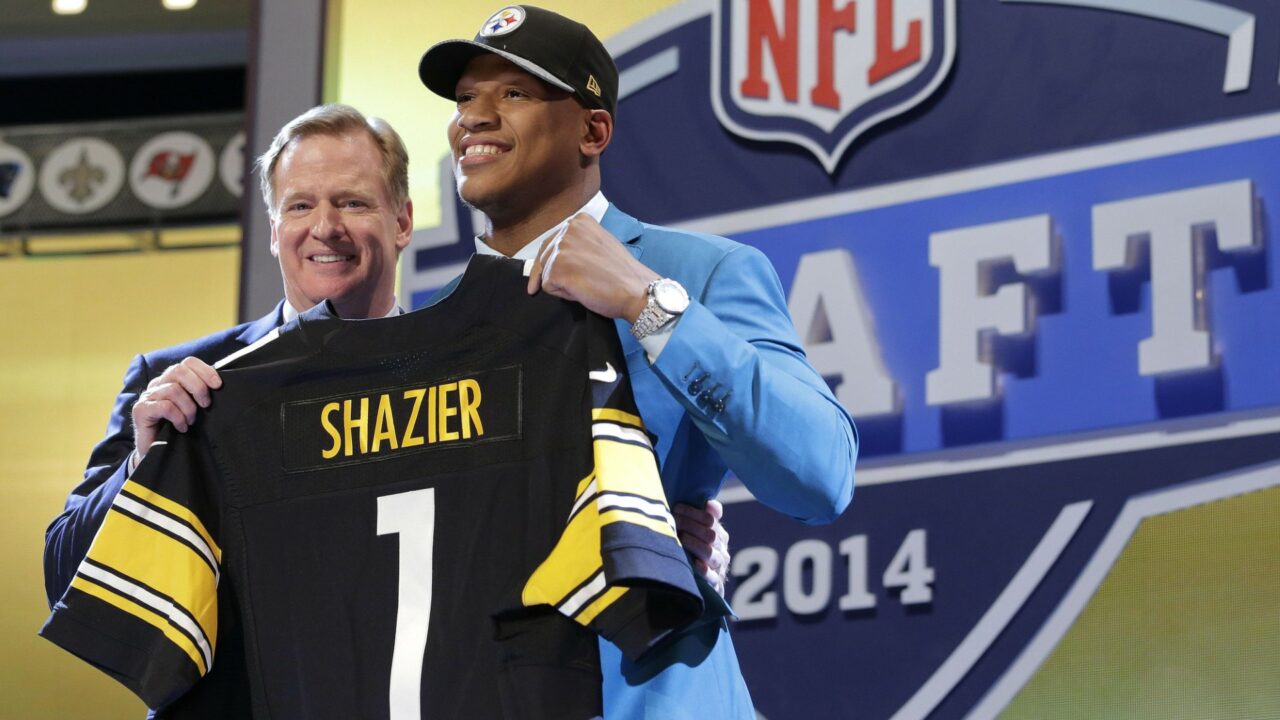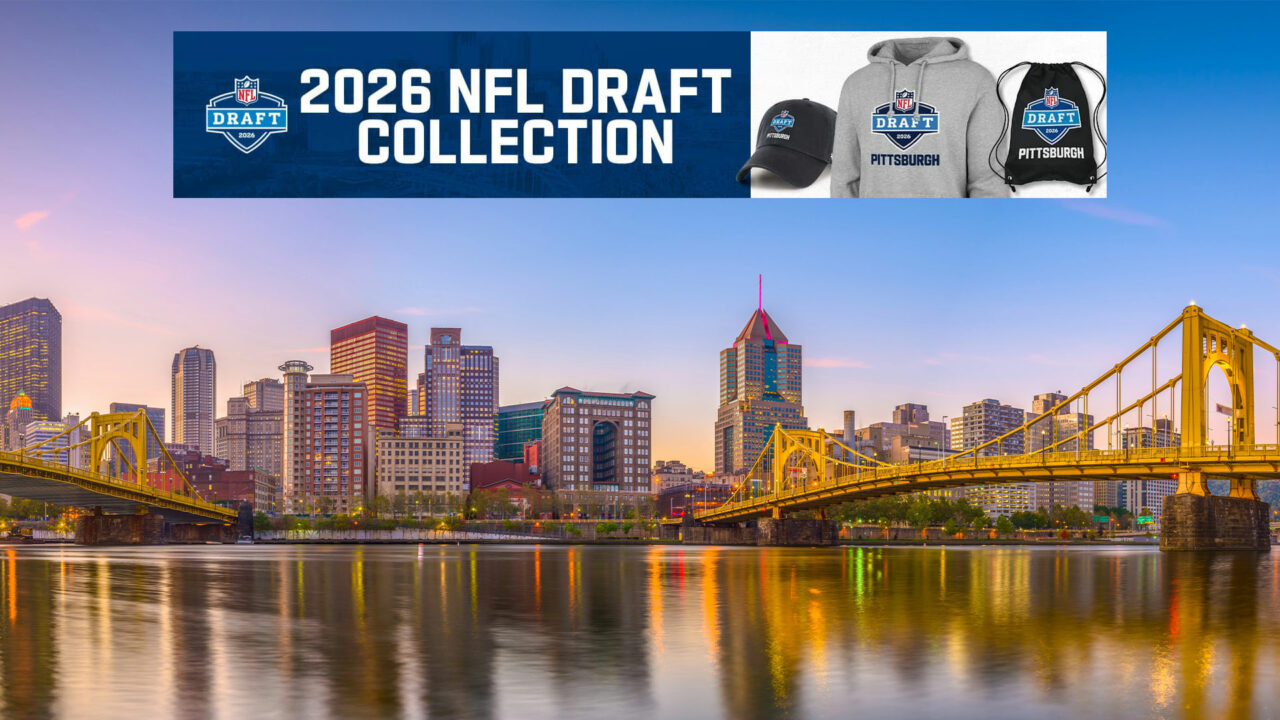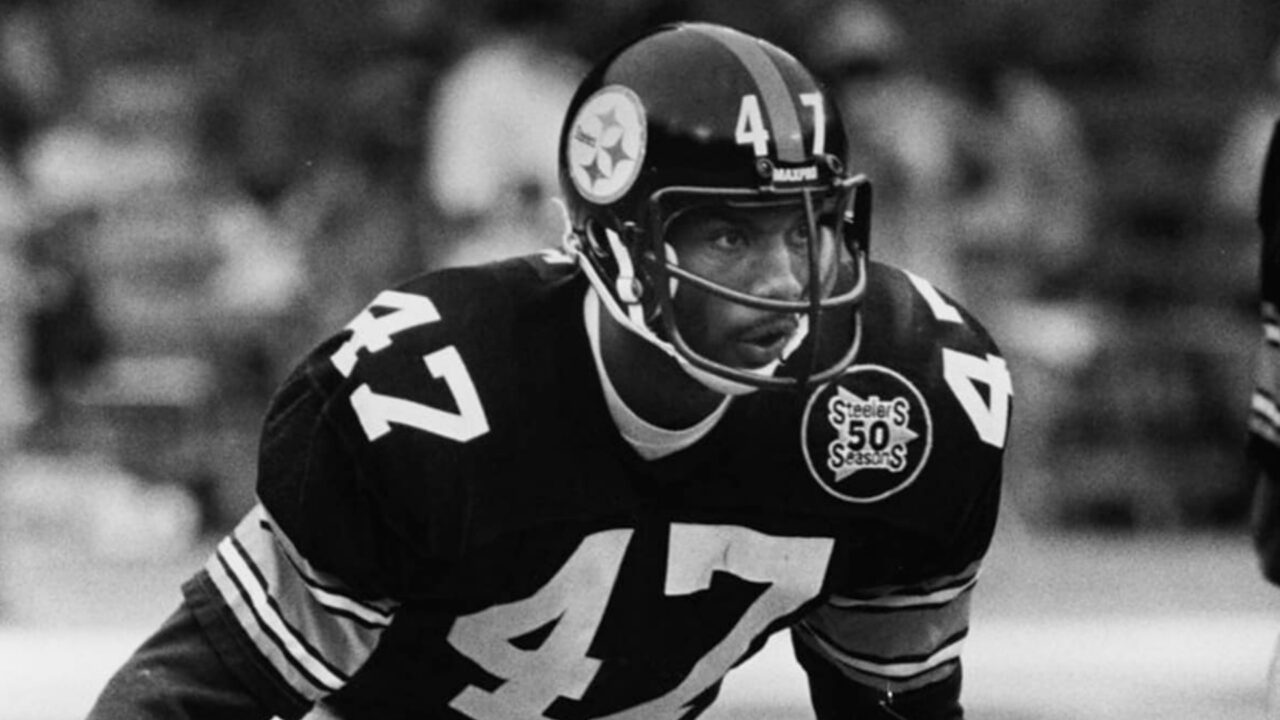Comparing the 3 classes of NFL, and Steelers, draft prospects
With the NFL Draft just around the corner, football fans everywhere are getting anxious to see which players will be selected to bolster their teams’ roster. Some of the prospects from the 2019 NFL Draft will be Pro Bowl and maybe even All-Pro caliber players at the next level, while others will fall flat and set their team back, instead of progressing toward the ultimate goal – to win the Super Bowl.
My suggestion for you? Don’t be that guy who sits himself down on the couch with a bowl of nachos on April 25th and blindly follows Mel Kiper’s big board. I’m going to teach you the basics of how to evaluate football talent for yourself.
There are three tiers of college football draft prospects preparing to enter the NFL: Class A, Class B, and Class C. It’s fairly simple grading scale. Allow me to define each tier and explain how to categorize every NFL draft prospect.
Class A: Athleticism and Production
Class A is the highest ranking of the three – in most cases, reserved for the best of the best. A player that is classified as a Class A prospect will have great athleticism along with outstanding college production. If a player lacks either, he cannot be classified as a Class A prospect. The player’s athleticism and production must be greater than the average prospect at his respective position to even be considered for this category. The greater the athleticism and production, the less likely you are to miss on a player at the next level. Here are a few examples of Class A prospects entering the NFL:
2018 Class A example: Saquon Barkley, RB
Barkley was a picture-perfect example of a Class A draft prospect. The former Penn State standout averaged over 1,300 rushing yards, 18 touchdowns, and 5.7 yards per carry over his past two seasons against Big 10 defenses. In addition, Barkley’s athleticism puts him above the 98th percentile for his position. Having an excellent combination of elite athleticism with outstanding college production at a high level of competition makes Barkley a virtual “can’t miss” prospect in the NFL. There can be debates about where running backs should be drafted, but Barkley is a Class A prospect every day of the week.
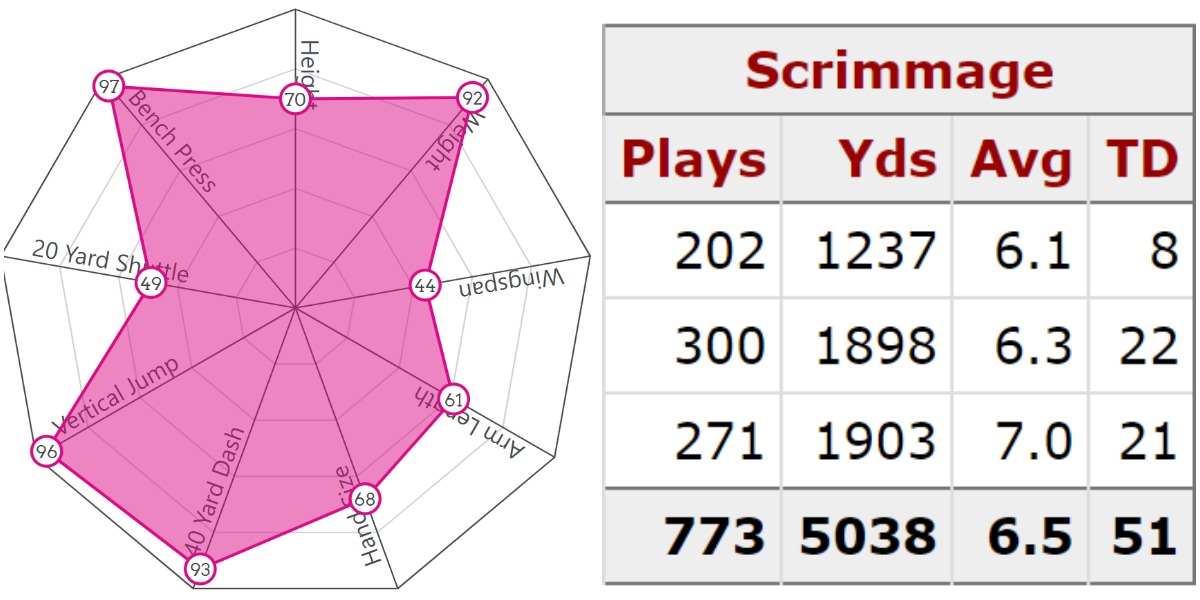
Steelers Class A example: Ryan Shazier, LB
Shaizer was well on his way to stardom, had it not been for the horrific neck injury he suffered less than two years ago. As a prospect, however, Shazier was certainly Class A. We all know how well Ryan Shazier tested before entering the 2014 NFL Draft, and his athleticism is not in question. However, Shazier also had incredible college production including 144 total tackles in his junior season, along with a whopping 23.5 tackles for a loss and 7 sacks.
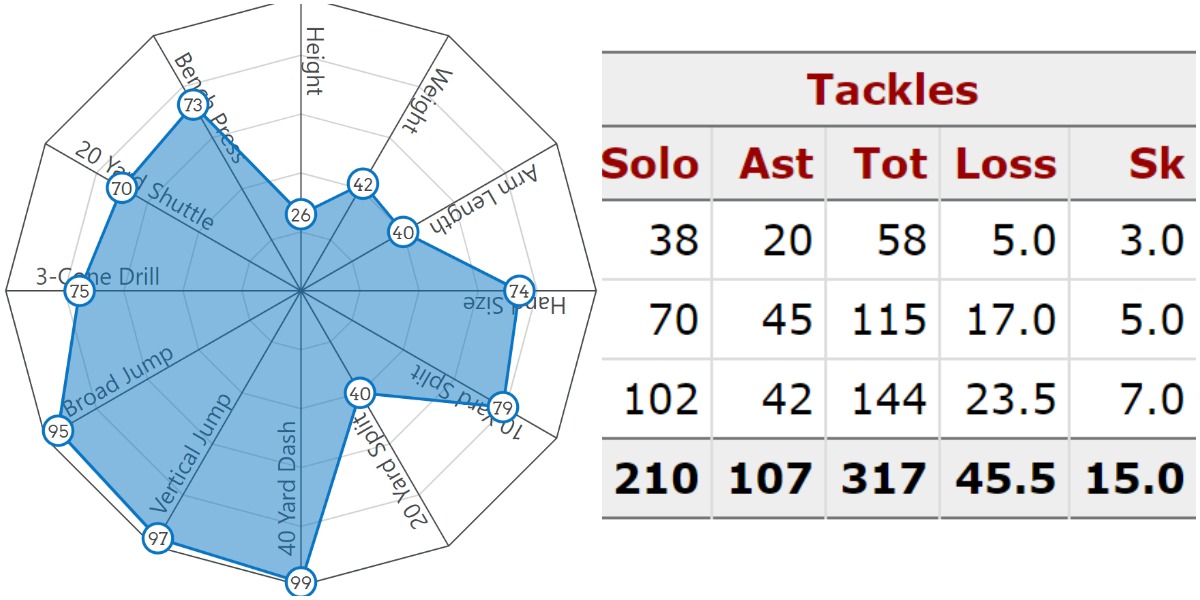
2019 Class A example: Devin White, LB
Devin White is considered a legitimate top 15 prospect for a reason. He is a productive SEC linebacker with superb athleticism. White clearly classifies as a Class A prospect with an impressive combination of of athleticism and statistical production. Based on this, he should be a pretty safe play to be, at the very least, a good player at the next level.
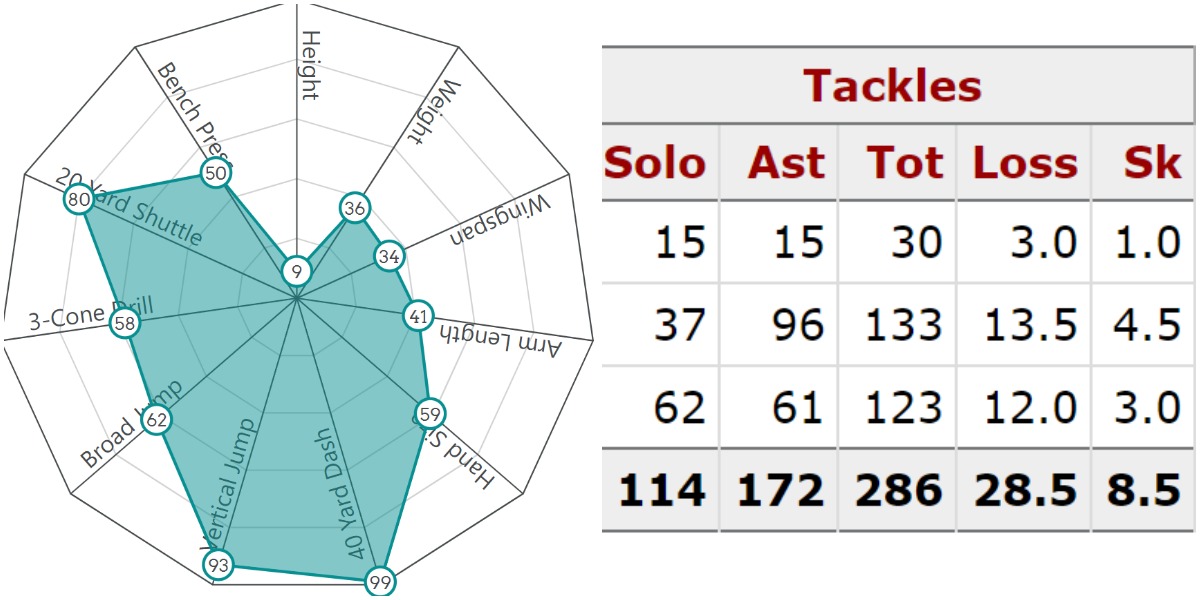
Class B: Athletic, but not Productive
Class B prospects are typically the second best type. An obvious step down from Class A, Class B prospects feature players who are great athletes but did not produce at a high level in college. When you think of a Class B player, think about Vikings defense end, Danielle Hunter. Hunter is a freaky athlete who tested incredibly well at the Combine and his pro day, but was lacking in a big way in the statistics department, with just 4.5 sacks over 3 years in college. Class B players typically have immense upside, but come at a risk. Teams hope to have a good enough coaching staff to mold their athletic tools into a good player at the next level. Here are some Class B examples:
2018 Class B example: Mike Gesicki, TE
Gesicki is your typical Class B prospect. He tested off-the-charts at the 2018 NFL Combine, but never had the tape or production to match. With a player like Gesicki, the tools are all there. You are hoping to be able to harness some of that raw athleticism and turn him into a good NFL player.

Steelers Class B example: Bud Dupree, EDGE
As I was describing Class B players, Bud Dupree might have even popped into your head. Bud was one of the most explosive athletes we have ever seen at the EDGE position – posting an 11’6” broad jump and a 42” vertical. His SPARQ score measured him in the 98th percentile of all players at his position. However, unlike Danielle Hunter, the Steelers haven’t had the favorable results to this point with Dupree. As you can see, his college production doesn’t stand out, as he averaged just 9.8 tackles for a loss per season at Kentucky.
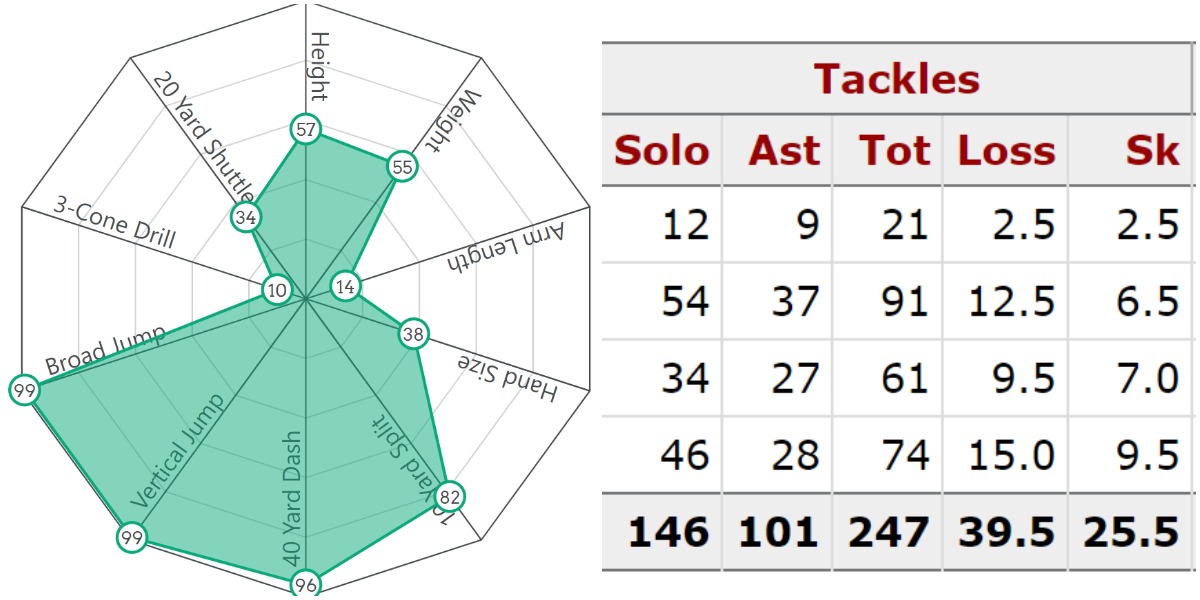
2019 Class B example: D.K. Metcalf, WR
Metcalf is widely considered a top receiver of the 2019 draft class, but it’s not because his college numbers were mind-boggling. Metcalf is a big, chiseled WR with insane speed (4.33) and explosion. Still, there are a lot of concerns for me. No matter how you slice it, Metcalf is a Class B player with some clear bust potential. Despite playing a full season as a sophomore, Metcalf earned only 39 catches for 646 yards and 7 touchdowns. The sky is the limit, but Metcalf’s lack of consistent college production makes him less safe than some of the Class A players in this draft class. Michigan’s Rashan Gary is another perfect example of a Class B prospect this year.
Class C: Productive, but not athletic
The final tier, Class C, is reserved for players who are extremely productive at the collegiate level, but are poor athletes. For most positions, it is extremely hard for these players to turn out to be stars at the NFL level. Let’s take Steelers linebacker Tyler Matakevich, for instance. Matakevich was insanely productive at Temple with 493 career tackles, 40.5 tackles for loss, 7 sacks, and even 7 interceptions. Despite all of these impressive numbers, Matakevich is a Class C player because of his poor athleticism. Matakevich’s testing numbers were so low, in fact, that he was just a few picks away from going undrafted until the Steelers scooped him up with a compensatory 7th round draft choice. Class C players can come in and be solid contributors, but are the least likely of the three tiers to emerge as star players in the NFL. Here are some examples:
2018 Class C example: Christian Kirk, WR
Kirk is a good example of a Class C player. He was a consistently productive college wide receiver in the SEC, and his college workload was in the 73rd percentile of draft eligible receivers. However, Kirk is a below average athlete who tested quite poorly in his explosion and agility drills.
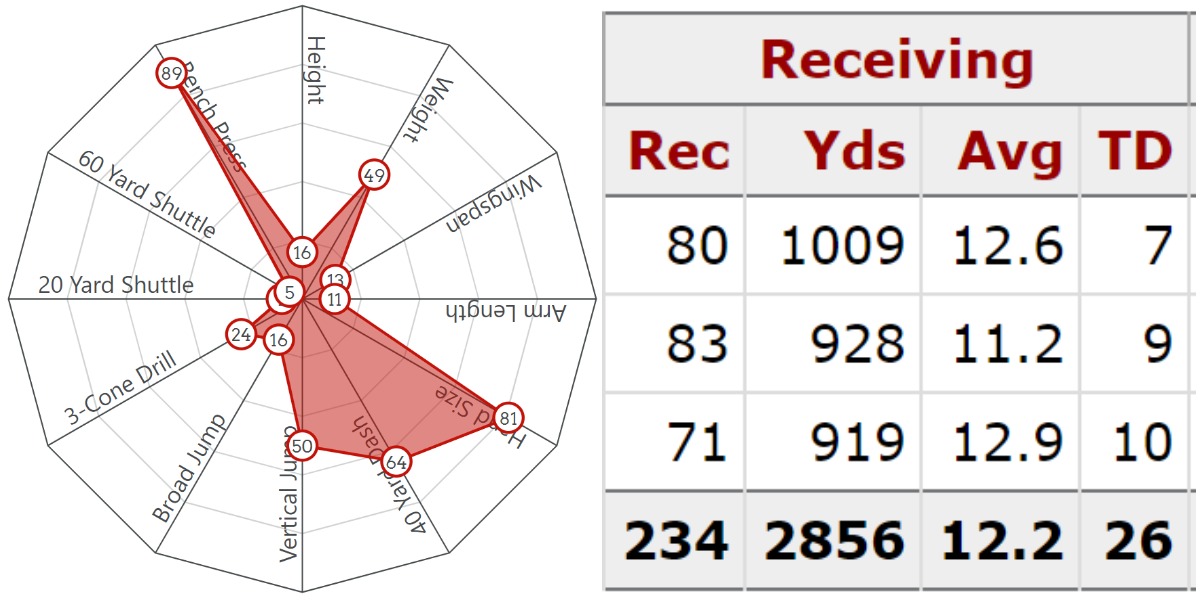
Steelers Class C example: Jarvis Jones, EDGE
Jarvis is one of the most obvious examples of Class C players. Jones was extremely productive in the SEC – gathering 44 tackles for a loss and a whopping 28.0 sacks over just a two year span. However, there were questions regarding Jones’s athleticism and major red flags emerged as Jarvis tested very poorly at his pro day. Sometimes Class C players work out, but in the 1st round, it’s rarely worth taking a chance on a player in the third tier of prospects.

2019 Class C example: Jachai Polite, EDGE
Polite is a guy was once talked about as a potential top 15 pick in this year’s draft. However, after a combination of poor interviews and even worse athletic testing, Polite is plummeting down draft boards. Polite is an extremely young player who garnered nearly 20 tackles for a loss last year to go with his 11.0 sacks. He flashes on tape with dip and a flashy spin move. But when it comes to the athlete, Polite is well below average. His poor testing makes him a Class C prospect in the draft. Byron Murphy is another player that has great tape and production, but is undersized and a below average athlete. I like Murphy a lot, but it does worry me that he is a Class C prospect.
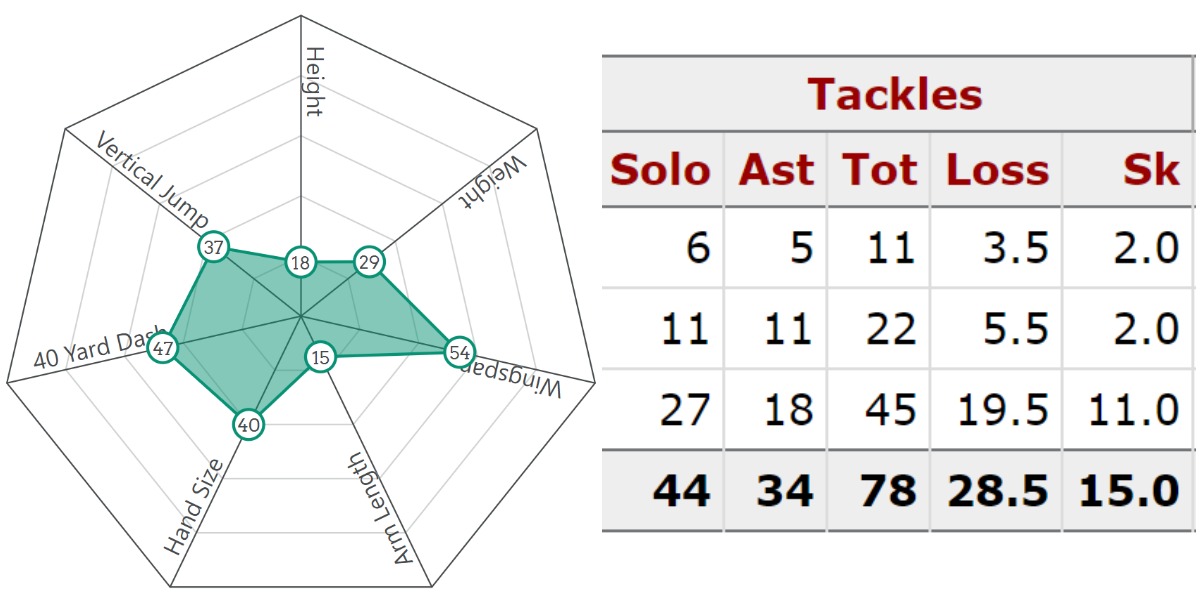
Conclusion
Like every other method of grading talent, categorizing players as Class A, B, or C is not foolproof. There are plenty of exceptions to the mold in each Class, and this method of dating doesn’t work perfectly for every position (like interior offensive line or quarterback, for example).
However, Class grading gives you a baseline for evaluating NFL talent. Understanding this method will help you predict which players are most likely to succeed at the next level and which players are likely to disappoint.
